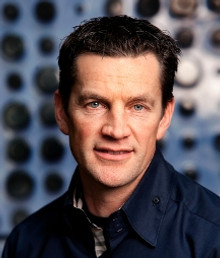
Emergence at all length scales
Focus session on emergence| 22nd January 2019 | Physics@Veldhoven
Piers Coleman
Jan de Boer
Marjolein Dijkstra
Klaas Landsman
Organizers and chairs: Jay Armas, Peter Bolhuis, Alix McCollam
An invitation to the science of emergence
Though it is commonly taught that the behaviour of all matter is governed by the underlying microscopic laws of physics, we are still far from understanding how the fundamental building blocks of matter, space and time assemble to form the structures that shape the world we experience today. During the past few years, large steps towards an understanding of emergent behaviour were taken, including the observation of new phases of quantum matter, the establishment of connections between quantum information theory and the reconstruction of geometry (and hence of gravity), new developments in multiscale modelling of soft matter systems, and novel methods in non-commutative geometry that aid the understanding of the emergence of classical physics from quantum theory. This session features an overview by condensed matter physicist Piers Coleman, renowned for his insights into the physics and philosophy of Emergence, and talks by Jan de Boer, Marjolein Dijkstra and Klaas Landsman, on examples of emergence in quantum gravity, soft matter and mathematical physics.
Programme (see talks here):

Emergence and Reductionism: An Awkward Baconian Alliance
Piers Coleman, Center for Materials Theory, Rutgers, Hubbard Theory Consortium and Physics Department, Royal Holloway, University of London
In this talk Piers will contrast Reductionism and Emergence, arguing that in practice, they compliment one-another, forming an awkward alliance in a fashion envisioned by the philosopher scientist, Francis Bacon. Looking at the historical record in classical and quantum physics, he'll discuss how emergence fits into a reductionist view of nature. Often, a deep understanding of reductionist physics depends on the understanding of its emergent consequences. Thus the concept of energy was unknown to Newton, Leibniz, Lagrange or Hamilton, because they did not understand heat. Similarly, the understanding of the weak force awaited an understanding of the Meissner effect in superconductivity. Emergence can thus be likened to an encrypted consequence of reductionism. Taking examples from current research, emphasizing the "Dark Matter Challenges of Quantum Matter" he will discuss how the convection between emergence and reductionism continues to provide a powerful driver for frontier scientific research, linking the lab with the cosmos. (slides here)
Reductionism is the marvellous idea that as we take matter apart to its smallest constituents, and understand the laws and forces that govern them, we can understand everything. Emergence, by contrast, is the intriguing idea that as matter comes together, it develops novel properties and unexpected patterns of collective behavior. Reductionism and emergence play an intertwined role in the everyday life of the physicist, yet we rarely stop to contemplate their relationship: indeed, the two are often regarded as conflicting world-views.
During the last years it has become clear that space and time are not fundamental but emergent notions that arise from underlying, more fundamental building blocks. In this talk the main ideas behind this key example of emergence, in particular the important role of quantum entanglement and quantum information, will be described, and applications to black holes and various open problems will be addressed. (slides here)
The Emergence of Space and Time
Jan de Boer, String Theory group, University of Amsterdam


Predicting the emergent properties of a material from a microscopic description is a scientific challenge. Machine learning and reverse-engineering have opened new paradigms in the understanding and design of materials. However, the soft-matter field has lagged far behind in embracing this approach for materials design. The difficulty stems from the importance of entropy, ubiquity of multi-scale and many-body interactions, and the prevalence of non-equilibrium and active matter. The abundance of soft-matter phases with orientation and positional order as in liquid crystals, quasicrystals, and plastic crystals, makes the classification non-trivial.
Machine Learning and Reverse Engineering for Soft Materials
Marjolein Dijkstra, Debye Institute for Nanomaterials Science, University of Utrecht
The classification of phases is further complicated by the thermal noise. I will address questions like: Can we use machine learning to detect phase transitions, classify phases and find the corresponding order parameters in soft-matter systems?, Can we use machine learning to coarse-grain our models?, How do we invert the design problem?
Despite traditional claims to the contrary (based on the WKB Approximation, Ehrenfest’s Theorem, eigenvalue asymptotics, etc.), it is not at all clear how and in which sense classical physics is a limiting case of quantum physics. This is true even in the non-relativistic, non-field theoretical case, not to speak of the derivation of space-time, gravity, and classical field theories from quantum theory. The framework of Emergence provides a natural language for this problem. We explain this framework and review recent progress in the non-relativistic case.
The Emergence of the Classical World from Quantum Theory
Klaas Landsman, Mathematical Physics Department, Radboud University Nijmegen

This case is already very interesting, since it includes solving the measurement or Schrödinger Cat problem, which is not merely a philosophical issue but is in fact one of the main obstructions to the derivation of classical physics and thereby poses a huge threat to the possible (universal) validity of quantum mechanics. The solution we propose also gives a mechanism for spontaneous symmetry breaking in large but finite systems. (slides here)
Organisers

Jácome Armas
(University of Amsterdam)

Peter Bolhuis
(University of Amsterdam)
